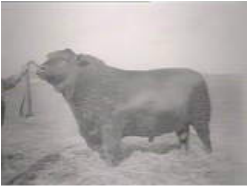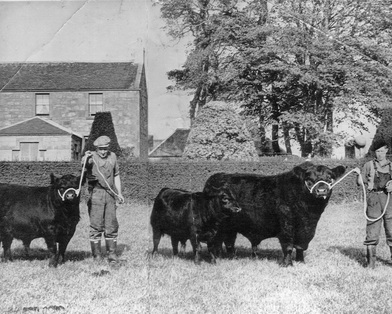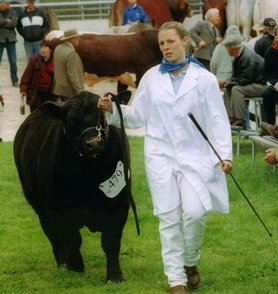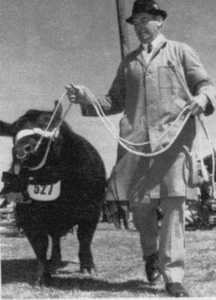History of Australian lowline Cattle
 Glencarnock Revolution 6th
Glencarnock Revolution 6th
Australian Lowlines are one of the few breeds that retain
pure genetics from the original herds in the countries of origin. This is
something UNIQUE in the beef world today but with changing climate, producers
wanting efficiency and consumers preferring healthy living, these original
genetics tick all the boxes.
When the NSW Department of Agriculture purchased cattle for their Trangie Agricultural Experimental Farm they chose a shipment of top stud Aberdeen Angus from the Glencarnock Estate of Mr James Duncan McGregor at Brandon, Manatoba, Canada, comprised of the 1927 Glencarnock show team, including 2 bulls, a cow and calf, and 17 heifers.
The cattle embarked on the steam ship ‘Huraki’ in December 1928 making it the first shipment of any cattle breed from Canada to Australia. After their arrival, the ‘show team’ was paraded at the 1929 Sydney Royal Show & later at the Melbourne and Brisbane Royal Shows.
These females belonged to the fashionable Angus families – Blackbirds, Blackcaps, Elba Ericas, Miss Burgess, Elsa Ericas, Enchantress Ericas, Georginas and several more lines from leading genetic families of the day. The bulls, Glencarnock Revolution 6th and Brave Edward Glencarnock were progeny of the great sires Blackcap Revolution & Edward Glencarnock. Further bulls were imported as sires in 1936, 1941 and a Scottish sire, Pro Ben of Balfron was introduced in 1956. These Aberdeen Angus were to be the forebears of our Australian Lowline cattle of today.
When the NSW Department of Agriculture purchased cattle for their Trangie Agricultural Experimental Farm they chose a shipment of top stud Aberdeen Angus from the Glencarnock Estate of Mr James Duncan McGregor at Brandon, Manatoba, Canada, comprised of the 1927 Glencarnock show team, including 2 bulls, a cow and calf, and 17 heifers.
The cattle embarked on the steam ship ‘Huraki’ in December 1928 making it the first shipment of any cattle breed from Canada to Australia. After their arrival, the ‘show team’ was paraded at the 1929 Sydney Royal Show & later at the Melbourne and Brisbane Royal Shows.
These females belonged to the fashionable Angus families – Blackbirds, Blackcaps, Elba Ericas, Miss Burgess, Elsa Ericas, Enchantress Ericas, Georginas and several more lines from leading genetic families of the day. The bulls, Glencarnock Revolution 6th and Brave Edward Glencarnock were progeny of the great sires Blackcap Revolution & Edward Glencarnock. Further bulls were imported as sires in 1936, 1941 and a Scottish sire, Pro Ben of Balfron was introduced in 1956. These Aberdeen Angus were to be the forebears of our Australian Lowline cattle of today.
|
TIMELINE
|
|



